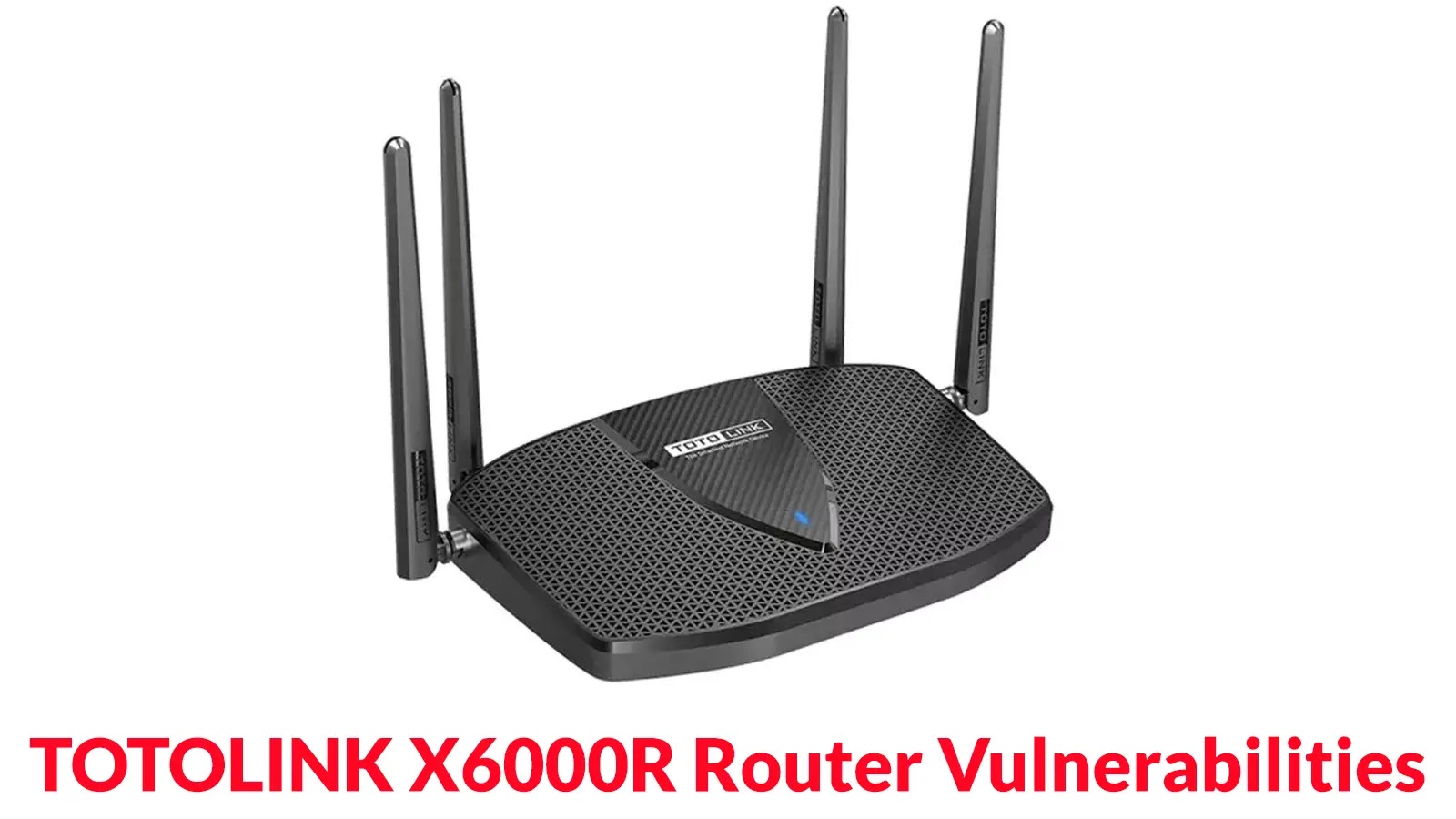
TOTOLINK X6000R Router Vulnerabilities Let Remote Attackers Execute Arbitrary Commands
The digital landscape is fraught with potential dangers, and the unassuming home router often serves as a critical, yet overlooked, entry point for attackers. Recent discoveries concerning the TOTOLINK X6000R wireless router underscore this reality, revealing critical vulnerabilities that expose users to severe risks, including remote code execution and unauthorized system access. These flaws in the router’s web interface and administrative functions create a wide array of attack vectors, potentially allowing malicious actors to seize complete control over affected devices.
This report delves into the specifics of these critical vulnerabilities, their potential impact, and immediate actions users must take to secure their networks. Understanding these threats is paramount for maintaining robust cybersecurity posture in today’s interconnected world.
Understanding the Core Vulnerabilities in the TOTOLINK X6000R
The TOTOLINK X6000R router, intended to provide seamless wireless connectivity, harbors significant security deficiencies. Researchers have uncovered several flaws, most notably multiple instances of remote code execution (RCE) and authentication bypasses. These vulnerabilities are not isolated incidents but rather a series of weaknesses that collectively compromise the device’s integrity.
The primary concern revolves around the router’s web management interface. This interface, designed for legitimate administrative tasks, can be manipulated due to insecure coding practices. Attackers can leverage these flaws to inject and execute arbitrary commands on the router with administrative privileges, effectively gaining full control. This level of compromise allows for a multitude of malicious activities, from data interception to network disruption.
Specific Vulnerabilities and Their Impact
While the original source notes emphasize “multiple attack vectors,” typical vulnerabilities leading to remote code execution in routers often include:
- Authentication Bypass: Flaws allowing unauthenticated attackers to access administrative functions or bypass login credentials.
- Command Injection: The most critical, where specially crafted input, often through web forms or URL parameters, is executed directly by the router’s operating system. This allows an attacker to run arbitrary commands on the underlying Linux system.
- Buffer Overflows: Malformed input that overwrites adjacent memory buffers, potentially leading to arbitrary code execution or denial of service.
- Cross-Site Scripting (XSS): While less direct for RCE, persistent XSS can be used to hijack authenticated user sessions or redirect users to malicious sites, often a precursor to more severe attacks.
The discovery of these vulnerabilities, while not yet publicly assigned specific CVE IDs in the provided source, points to a serious security oversight. For illustrative purposes, if these were assigned, they might resemble:
- CVE-2023-XXXXX (Hypothetical RCE via Command Injection)
- CVE-2023-YYYYY (Hypothetical Authentication Bypass)
The impact of successful exploitation is profound. An attacker gaining control of a router can:
- Intercept Network Traffic: Monitor all data passing through the router, including sensitive personal and business information.
- Redirect Traffic: Force users to visit malicious websites (phishing or malware distribution).
- Launch Further Attacks: Use the compromised router as a pivot point to attack other devices within the internal network.
- Create Backdoors: Establish persistent access to the network even after router reboots.
- Participate in Botnets: Enroll the router into a botnet for DDoS attacks or other illicit activities without the user’s knowledge.
Remediation Actions for TOTOLINK X6000R Users
Given the severity of these vulnerabilities, immediate action is not just recommended, but critical. Users of the TOTOLINK X6000R must prioritize these steps to mitigate the risks:
- Disconnect from the Internet (Immediate Emergency Measure): If no other option is immediately available, physically disconnect the router from your internet service. This is a temporary measure to prevent external exploitation.
- Check for Firmware Updates: The most crucial step. Visit the official TOTOLINK support website regularly to check for any published firmware updates specific to the X6000R model. Install any available security patches immediately. Often, manufacturers release patched firmware once vulnerabilities are publicly disclosed.
- Change Default Credentials: If you haven’t already, change the default administrator username and password for the router’s web interface. Use strong, unique passwords.
- Disable Remote Management: Most home users do not require remote access to their router’s administrative interface. Disable this feature in the router settings to prevent external attackers from even attempting access.
- Limit Network Access: Review your router’s firewall settings. Restrict access to the router’s administration panel to only trusted IP addresses within your local network.
- Monitor Network Traffic: Implement network monitoring tools if possible to detect unusual activity or outbound connections from your router.
- Consider Router Replacement: If the manufacturer does not release timely security patches, or if the history of vulnerabilities is extensive, consider replacing the TOTOLINK X6000R with a router from a manufacturer with a stronger security track record and consistent update policy.
Tools for Detection and Mitigation
While specific tools for detecting these exact vulnerabilities might require advanced penetration testing knowledge, general network security practices and tools can help identify compromised devices or potential weaknesses:
| Tool Name | Purpose | Link |
|---|---|---|
| Nmap (Network Mapper) | Network discovery and security auditing. Can identify open ports and services on a router. | https://nmap.org/ |
| Wireshark | Network protocol analyzer. Useful for monitoring traffic to/from the router for suspicious activity. | https://www.wireshark.org/ |
| OpenVAS/Greenbone Vulnerability Manager | Vulnerability scanning solution. Can identify known vulnerabilities in network devices, including routers. | https://www.greenbone.net/en/community-edition/ |
| Router Security.org (General Resource) | Provides guides and tools for securing home routers. | https://www.routersecurity.org/ |
Protecting Your Network in an Evolving Threat Landscape
The discovery of critical vulnerabilities in the TOTOLINK X6000R router serves as a stark reminder of the persistent security challenges in network hardware. Attackers constantly seek weaknesses in pervasive devices like routers to gain a foothold into personal and corporate networks. Users must remain vigilant, prioritize security hygiene, and stay informed about potential threats to their internet-connected devices.
Regularly updating firmware, employing strong authentication, and understanding the security posture of your hardware are not merely best practices; they are essential defenses against the sophisticated threats that characterize today’s cybersecurity environment. Neglecting router security can have far-reaching consequences, making proactive measures the only reliable path to digital safety.





